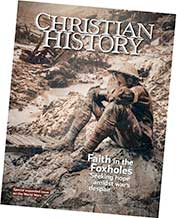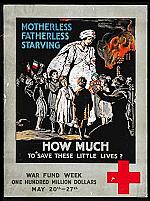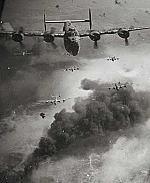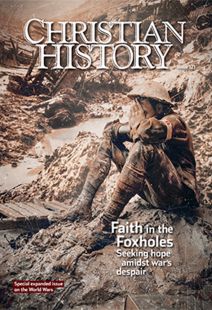Mitsuo Fuchida: from Pearl Harbor attacker to Christian evangelist
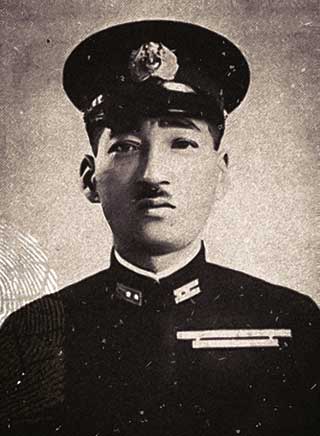
[Fuchida—Wikimedia]
COMMANDER MITSUO FUCHIDA (1902–1906) of the Imperial Japanese Navy Air Service is perhaps best known for leading the first wave of bomber and fighter planes during Japan’s attack on Pearl Harbor. At 7:40 a.m. on December 7, 1941, he sent up the green flare from his plane signaling the order to attack; and he later ordered his radio operator to send the message “Tora! Tora! Tora!,” informing the Japanese that they had achieved complete surprise. (In 1970 Tora! Tora! Tora! was the title of a cinematic dramatization of the attack.)
The attack on the Hawaiian US Navy base resulted in 2,403 American and 64 Japanese deaths. The following day the United States officially declared war on Japan and entered World War II.
Fuchida served Japan throughout the war. He once again escaped possible death when an emergency appendectomy left him on the bridge of the aircraft carrier Akagi instead of flying a plane when the United States attacked during the Battle of Midway.
Later, having broken both ankles when thrown by an explosion, he became a staff officer with Vice Adm. Kakuji Kakuta. Ordered to Tokyo just before Kakuta failed to stop the American liberation of Guam, he would otherwise have participated with Kakuta in suicide by seppuku. “Again the sword of death had missed me only by inches,” he told reporter Hal Drake in 1971.
One of his tasks was to inspect the city of Hiroshima after the atomic bomb was dropped—again he was the only one of his party not to die, this time from radiation poisoning. (He would have by original orders been in Hiroshima when the bomb exploded on August 6, but was abruptly sent to Yamato instead on August 5 for an intelligence briefing.) After returning to his family and their chicken farm, he later recalled, “Life had no taste or meaning. … I had missed death so many times and for what? What did it all mean?”
The code of the warrior
After the war a number of Japanese military personnel were put on trial for war crimes relating to their treatment of prisoners of war. Fuchida, called on to testify, felt the trials were a sham. He had harbored resentment of the United States for decades due to its restrictions on Asian immigration, and he believed the Americans had treated Japanese POWs just as badly. He sought out recently released POWs to gather evidence. It was then he met his former flight engineer Kazuo Kanegasaki, presumed to have died at the Battle of Midway, who had instead been taken prisoner.
Order Christian History #121: Faith in the Foxholes in print.
Subscribe now to get future print issues in your mailbox (donation requested but not required).
Rather than telling a story of abuse and torture by Americans, the man told him of a young American woman, Peggy Covell, who treated him and his fellow prisoners with great kindness even though Japanese soldiers had killed her missionary parents in the Philippines. Fuchida was astounded. The code of the warrior not only permitted revenge, it demanded it; but this woman declined revenge and offered compassion to Japanese prisoners.
This sparked Fuchida’s interest in Christianity. He soon encountered the testimony of Jacob DeShazer, an American POW who shared his story of finding God in a Japanese camp in I Was a Prisoner of Japan (1950). In September 1949 Fuchida became a Christian. “Looking back,” he said later, “I can see now that the Lord had laid his hand upon me so that I might serve him.”
Fuchida established the Captain Fuchida Evangelistical Association and began to travel full time sharing a presentation of his conversion story. In his autobiography, From Pearl Harbor to Calvary (1959), he wrote, “I remember the thrill that was mine when, in one of my first [evangelistic] meetings, I led my first soul to Christ in America. And he was one of my own countrymen.” In 1952 he toured with the Worldwide Christian Missionary Army of Sky Pilots.
Over the years Fuchida authored a number of books including the autobiography and an account of the Battle of Midway. He died in Japan at age 73. —Matt Forster.
This article is from Christian History magazine #121 Faith in the Foxholes. Read it in context here!
By Matt Forster
[Christian History originally published this article in Christian History Issue #121 in 2017]
Matt Forster is a freelance writer from Clarkston, Michigan.Next articles
Spreading light in a dark world
The world wars served as a pivotal time for Christian relief efforts
Jared S. BurkholderWorld Wars: Recommended resources
The landscape of resources about faith in the world wars is vast. Here are some recommendations from CH editorial staff and this issue’s authors.
the editorsSupport us
Christian History Institute (CHI) is a non-profit Pennsylvania corporation founded in 1982. Your donations support the continuation of this ministry
Donate



